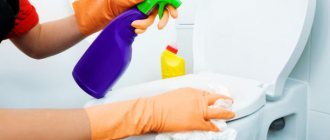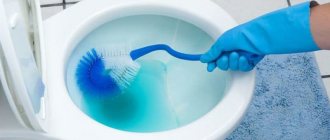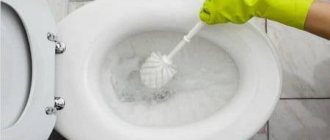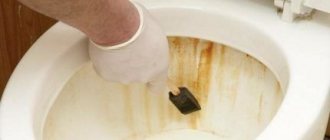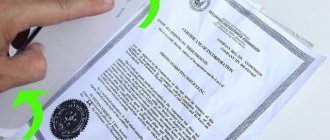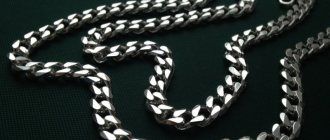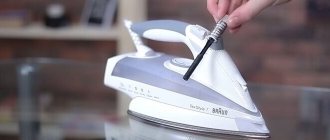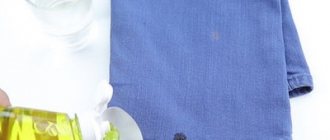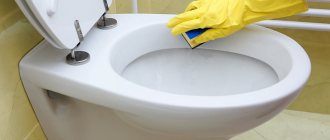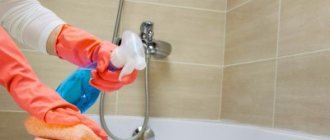Features of cleaning the toilet from urinary stones
Since the problem is a pervasive one that many people have experienced, several best ways to clean a toilet have been identified. To do everything correctly, to use the right products, you need to study all the features of these procedures and existing specialized cleaning products.
Also, it would not be amiss to become familiar with the reasons why the stone is formed, because by removing the cause, you can get rid of the problem for good. Now, detergent manufacturers produce a variety of liquids that help housewives solve this problem.
What is the reason for the formation of urinary stones on the toilet?
The first thing you need to pay attention to is the root of the problem, the root cause. Getting rid of a stone is much easier if you know why it appears.
Experts note the following culprits:
- A material that has rough structures. Using a brush or other tool with hard bristles will wear out the coating. Roughness can be the basis for the occurrence of pockets of mineral and bacterial deposition.
- Water. Oddly enough, poor quality water masses are also a culprit. Harmful mineral compounds in water can collect on the wall of the toilet, and larger pockets turn into urinary stones or plaque.
- Tank malfunction. Any leak that comes from the tank can be a source of bacteria collection. The deposit appears due to constant contact of water with surfaces.
- Corrosion processes. Everyone knows that the appearance of rust is a harbinger of much bigger problems than stones. Due to rusty pipes, the water becomes dirty and a large number of harmful minerals and bacteria appear.
In general, you can see that this list is quite large, but it is not exhaustive. There are many reasons, but you can get rid of them by periodically maintaining your sanitary equipment.
Main types of pollution
To choose the right cleaning product, you need to determine the type of contamination.
To eliminate unpleasant odors in the toilet room, any preparations based on chlorine or with fragrances are suitable. The smell appears when microorganisms multiply.
If rusty water comes out when flushing, you need to purchase products containing acid.
When plaque appears on a faience bowl, a product containing alkali is required. Deposits are formed due to increased water hardness.
Acetic acid for toilet cleaning
Experienced housewives have long noticed that under the influence of this type of acid, it is possible to clean the toilet from many contaminants and formations. Moreover, vinegar can be found in almost any kitchen. Cleaning occurs in several stages, including:
- Preparation of the necessary equipment (gloves, brushes, brushes, etc.).
- Preparing the container for the liquid, achieving the optimal temperature (the vinegar solution should be a little warm).
- Applying liquid to problem areas where urinary stones or plaque has appeared.
- Waiting (you need to leave the product for about one hour).
- After an hour, the softened deposits are cleaned (this can be done using soft silicone or wooden spatulas).
- Rinsing off residues.
This method is quite popular and effective when cleaning small deposits.
Potent chemistry
If the dirt is very old and the layer of limescale is very thick, then strong substances come into play.
Please note that their frequent use is contraindicated!
Hydrochloric acid
The use of hydrochloric acid requires compliance with safety rules. It is not recommended to inhale acid vapors! The use of acid in the presence of plastic pipes is prohibited. The use of protective gloves is mandatory!
The acid is applied to the inner surface of the toilet and under the rim, left for 15 minutes and washed off with a brush and a large stream of water.
Battery electrolyte
The main component of battery electrolyte, which is the main active element in a car battery, is sulfuric acid. It is known from school curriculum that this substance is extremely dangerous and must be used with extreme caution and only in the most extreme cases.
Orthophosphoric acid
This substance will allow you to get rid of urinary stones in just 10-15 minutes. It can be used even in the presence of plastic elements and pipes. Be sure to use rubber gloves!
A solution of soda and vinegar to remove urinary stones from the toilet
This method is intended for cleaning larger lesions.
It is worth noting that it is slightly different from the previous one. The peculiarity is that the toilet does not need to be dried; on the contrary, flushing will be useful here. The fact is that for effective cleaning the structure must remain slightly damp.
As with the previous case, everything is done in several steps:
- Sprinkling soda on the wet walls of the toilet. It’s worth taking the whole pack to make the method more effective. After this, leave the resulting porridge for two or three hours.
- Preparation of inventory.
- Preparation of vinegar solution. It also doesn't need to be heated too much.
- Spraying liquid onto the coating. Then you need to wait about one hour.
- When finished, remove any remaining product and wash the structure with soap or a special solution.
It should be said that this case is a little more complicated than the first, but its effectiveness is much greater. Of course, it is not advisable to choose it when the deposits are small.
Prohibitions when cleaning
When cleaning the toilet, you should remember a number of restrictions and prohibitions:
- Do not use metal objects or tools with sharp edges for processing, as they can damage the surface of the toilet bowl itself.
- Chemicals should not be kept on the surface for longer than the specified time, since with very long contact, aggressive chemicals can destroy the upper layers of the toilet material.
- You should not use boiling water to flush the toilet, as hot water may cause the earthenware to burst or develop a network of microcracks. It is possible to use only warm or cold water.
Do not pour several products into the toilet at the same time. When mixed, they can give an unpredictable reaction, damage plumbing, release toxic fumes, etc. If the drug used does not help, then a new one can be used only after thoroughly washing off the previous substance.
Salt and vinegar for cleaning the toilet
These substances are suitable for those people who want not only to get rid of stones, but also to have an antibacterial effect. The antiseptic here is salt, which fights harmful bacteria well.
The process looks like this:
- Preparation of vinegar and equipment. Here, too, it is necessary to heat the substance until it reaches a temperature of forty-five degrees.
- Add one to two teaspoons of salt.
- Apply the resulting liquid to problem areas.
- At the end of spraying, wait until it softens completely, then simply rinse off the water.
This procedure looks quite simple, the materials can also be found in any home. That is why it is not inferior in popularity to the previous ones.
The most effective toilet cleaners
Every day, housewives fight against various stains, formations and dirt. Therefore, new ways and methods of getting rid of problems are being invented.
Let's look at a list of non-standard techniques:
- Use of wood soot. Here the soot is mixed with citric acid in proportions of one to one. Further, the process of action is no different from the methods described above.
- Carbonated drinks. It's no secret that gas and citric acid have a good effect on various rust spots. Since even corrosion is inferior to drinks, urinary stones are also very easily removed.
- Toothpastes. When purchasing a paste, you can see that it has a whitening effect on teeth. The materials from which the plumbing fixtures are made are also susceptible to this effect and can be cleaned well.
How to prevent deposits from forming
In order not to resort to the use of strong remedies, you can carry out a number of simple measures to prevent the problem.
Monitor the condition of the plumbing. It is necessary to repair breakdowns in a timely manner and prevent leaks in the drainage system.
- Do not flush foreign objects down the toilet.
- Clean the toilet regularly. Limescale and urinary stones must be washed off as soon as they are noticed.
- Use a special pipe cleaner, for example, “Mole”.
- Flush the water after each visit to the toilet.
If you follow these recommendations, the toilet will remain clean much longer, and you will no longer have to deal with serious deposits of 1-2 centimeters.
Brands of special solutions
Nowadays it’s very easy to go to the store and buy a ready-made product that is not inferior in terms of effectiveness to traditional methods.
Pay attention to these brands:
- BREF - Hungary.
- SC JOHNSON – USA.
- FABERLIC – Russia.
- COMET - USA.
- BAGI - Israel.
- GRASS – Russia.
